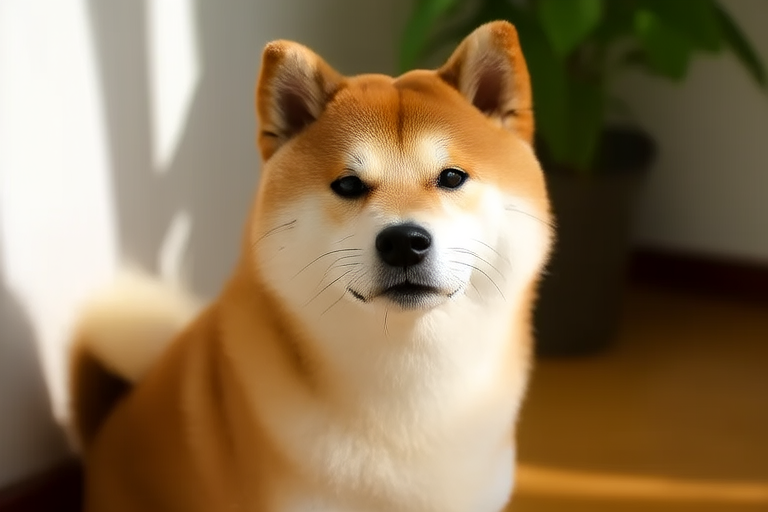The Ultimate Guide to Adopting a Shiba Inu Puppy: Tips from Experts
Shiba Inus are one of the most popular dog breeds today, known for their striking appearance and unique personalities. However, owning a Shiba Inu comes with its own set of challenges and responsibilities. This comprehensive guide will walk you through everything you need to know about adopting a Shiba Inu puppy, from understanding their temperament to preparing your home and family.
Understanding the Shiba Inu Temperament
Shiba Inus are small to medium-sized dogs with a fox-like appearance. They are intelligent, independent, and often described as aloof. These traits make them excellent companions but also require patience and consistency when training. Shiba Inus are typically reserved around strangers but can be very loyal to their families. Early socialization is crucial to ensure they become well-adjusted adults.
Selecting a Reputable Breeder or Shelter
When looking to adopt a Shiba Inu, it’s important to choose a reputable breeder or shelter. A good breeder will provide health clearances for both parents and offer guidance on caring for your new puppy. Shelters, on the other hand, can provide you with a loving pet that needs a second chance. Whichever route you choose, make sure to ask questions about the dog’s background, health, and temperament.
Health Considerations
Shiba Inus are generally healthy dogs, but like all breeds, they are prone to certain health issues. Common conditions include hip dysplasia, patellar luxation, and eye problems such as progressive retinal atrophy. Regular vet check-ups and a balanced diet are essential to maintaining your Shiba Inu’s health. Additionally, Shiba Inus are prone to overheating, so keep them cool during hot weather.
Training Techniques
Training a Shiba Inu requires patience and consistency. Positive reinforcement methods work best, rewarding good behavior with treats and praise. Shiba Inus can be stubborn, so it’s important to establish yourself as the leader early on. Crate training is highly recommended for housebreaking and providing a safe space for your puppy. Socialization is also key; expose your Shiba Inu to different people, animals, and environments from a young age.
Grooming Needs
Shiba Inus have a double coat that sheds heavily twice a year. Regular brushing is necessary to prevent matting and reduce shedding. Bathing should be done only when necessary, as frequent bathing can strip the coat of its natural oils. Shiba Inus also require regular nail trimming, ear cleaning, and dental care to maintain overall hygiene.
Dietary Requirements
A high-quality dog food formulated for small to medium-sized breeds is ideal for Shiba Inus. Look for foods that contain real meat as the primary ingredient and avoid those with fillers or artificial preservatives. Consult with your veterinarian to determine the appropriate portion size based on your Shiba Inu’s age, weight, and activity level. Fresh water should always be available.
Common Behavioral Issues
One of the most common behavioral issues with Shiba Inus is excessive barking. They are alert and vocal by nature, but this can be managed with proper training. Another issue is chewing; Shiba Inus love to explore with their mouths, so providing plenty of chew toys can help redirect this behavior. Lastly, Shiba Inus can be territorial and may display aggression towards other animals, especially if not properly socialized.
Preparing Your Home and Family
Bringing a Shiba Inu puppy into your home is an exciting but challenging experience. Here are some practical tips to help you prepare:
- Create a Safe Space: Designate a specific area in your home where your puppy can feel secure. This could be a crate or a cozy corner with soft bedding.
- Puppy-Proof Your Home: Remove any hazardous items or substances that could harm your puppy. Secure loose wires and cover electrical outlets.
- Establish Routines: Puppies thrive on structure. Establish consistent feeding, play, and bedtime routines to help your Shiba Inu adjust to its new environment.
- Introduce Your Puppy to Family Members: Gradually introduce your puppy to each member of the household. Encourage gentle handling and positive interactions.
- Prepare for Accidents: Accidents are inevitable when potty training. Use absorbent pads or newspapers in areas where your puppy spends time until they are fully trained.
Final Thoughts
Owning a Shiba Inu puppy is a rewarding experience, but it requires dedication and commitment. By understanding their unique temperament, selecting a reputable breeder or shelter, addressing health concerns, employing effective training techniques, maintaining proper grooming, ensuring a balanced diet, and being prepared for common behavioral issues, you can provide your Shiba Inu with a happy and healthy life. Remember, every dog is an individual, so take the time to get to know your new family member and tailor your approach accordingly.
